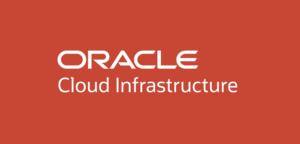
Oracle Delivers More On-Prem Options for Hybrid Cloud

Oracle is helping its hybrid cloud customers keep sensitive data on-prem with two announcements today, including a lowered price point for its full-service OCI Dedicated Region, as well as a preview of Compute Cloud@Customer, which brings a scaled-down set of cloud services to a customer’s site.
Oracle’s public cloud, dubbed Oracle Cloud Infrastructure (OCI), is offered in 32 regions around the world, giving thousands of customers the ability to get out of the business of hosting servers, provisioning storage, and futzing around with networking. Oracle also offers managed versions of its ERP, supply chain, and logistics applications, making it an enticing option for cloud-first customers.
However, not every customer is fully on board with putting their sensitive data and applications on the public cloud. For these customers, Oracle offers OCI Dedicated Region, a hybrid cloud solution that brings the full breadth of OCI services to customers’ own data centers. These engagements include hundreds if not thousands of physical servers–enough to run all of the OCI services (there are close to 100 of them currently)–as well as the care and feeding of the services by Oracle personnel.
OCI Dedicated Region engagements entail big IT contracts, but they will be a bit smaller now as a result of Oracle lowering the entry fee. The Austin, Texas computing giant says customers can get started with OCI Dedicated for just $1 million per year with a four-year commitment. Beyond that, OCI Dedicated customers are billed at the exact same rate as their public cloud brethren are.
Oracle is competing aggressively on price, says Leo Leung, vice president of products and strategy for Oracle.
“If you look at comparisons [with other cloud vendors], it’s lower in almost every category on the compute side, storage, and networking side,” Leung tells Datanami. “And there are a lot of services that we don’t charge for at all. They’re just included.”
Governments, banks, and telecoms have been the primary customers for OCI Dedicated. For each of the 100 or so services, such as Oracle database service, Kubernetes management, object storage, or authentication, there may be multiple redundant servers providing that service. For an OCI Dedicated engagement, Oracle rolls all these servers, storage devices, and networking connections out to customers in their own data centers.
“Another way to think about it is we’re literally building a region for a single customer,” Leunn says. “We know for most customers and most workloads, the public cloud is great. But there’s always going to be certain types of applications and workloads that customer need to run a specific location, either in their prem or a specific country or near certain performance-specific applications, the manufacturing floor, for example.”
One of these customers is NRI, which provides financial software to customers as a service in Japan. According to Leung, NRI runs two OCI Dedicated sites to provide the greatest degree of data sovereignty for its clients, which are 100 of the biggest banks in Japan.
“Even though we have public cloud regions in Japan, they wanted that additional control over the environment to run these applications,” he says. “It allows them to have more control over their environment, over the data, which helps them meet certain Japanese compliance requirements.”
Oracle’s second announcement is targeted at customers that want a smaller set of OCI services. Compute Cloud@Customer gives customers access to basic services, such as Oracle or MySQL database, virtual machines, and object, file, and block stores.
The Compute Cloud@Customer solution starts at one rack, and scales up to several racks, with a max of 480 servers, Leung says. It’s a much smaller solution compared to OCI Dedicated. “A customer can basically run their entire IT operation on a dedicated region,” he says, “whereas a Compute Cloud@Customer, we’re talking about a few dozen workloads.”
The Compute Cloud@Customer is modeled on ExadataCloud@Customer, a preexisting solution that gives customers the ability to run Oracle database workloads on prem in a public cloud manner. Oracle found that customers wanted the same cloud-like infrastructure to handle their application workloads that Exadata Cloud@Customer provided for their database workloads.
“They’re running the database piece on Exadata Cloud @Customer. But to date, they’ve been using physical servers or VMware etc. to run the application side of those workloads,” Leung says. “So the Compute Cloud @ Customer becomes a new option for them to have a fully managed experience for the compute and storage side of the operation.”
There’s one more difference between OCI Dedicated and Compute Cloud@Customer: the control plane. For OCI Dedicated, the control plane—i.e. all of the 100 or so services that Oracle offers through its public and hybrid cloud—runs entirely at the customers’ site. For Compute Cloud@Customer, the control plane remains in the cloud. So access to these other services, including activities like provisioning a database, is handled through the public cloud.
“You would see it in your console,” Leung says. “[Customers say] yes I want to provision some VM instances or a database. That would issue a command to that local appliance and those resources would be provided.”
Oracle finds there’s a gradation of what customers are comfortable with when it comes to the cloud. Some customers are okay with having all of their data and applications residing in the public cloud, while some customers want their data to remain on prem but are happy to put the control plane in the cloud. Still others want all of the data, metadata, applications, and API calls to remain on prem, with nothing left to the public cloud, Leung says.
Emerging data sovereignty laws, the availability of cloud services, and the need for high performance are also factors impacting where customers put their data and apps.
“Ultimately if you look at the public cloud region availability, it’s like 20 to 25 countries that actually have public cloud data centers in them. Meanwhile there’s dozens more countries that don’t have a public cloud region,” he says. “So certainly there are those types of needs from a data privacy and performance perspective. If you need very, very low latency and high performance, you want the infrastructure close to the location of your choosing. So we think there’s a very large opportunity for this.”
Related Items:
Report: Despite Cloud Growth, Clear Skies Ahead for Hardware Spending
Oracle Touts an Exadata Backlog
Cloud Getting Expensive? That’s By Design, But Don’t Blame the Clouds
































